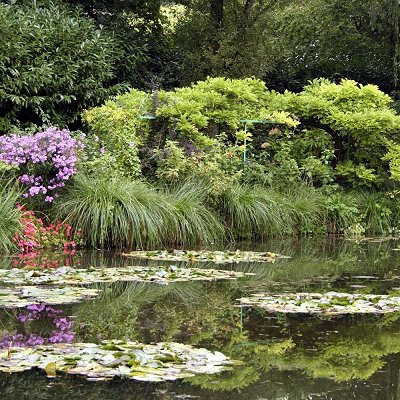
Like us on Facebook
PLACE NAMES


 
|
|
Giverny
|

| |
|
A settlement has existed in Giverny since neolithic times and a monument uncovered attests to this fact. Archeological finds have included bootees dating from Gallo-Roman times and to the earlier 1st and 2nd centuries AD. The town was known in ancient deeds as "Warnacum".
The cultivation of grapes has been an occupation of the inhabitants of Giverny since Merovingian times.
The village church dates from the Middle Ages and is built partially in the Romanesque style, though additions have since been made. It is dedicated to Sainte-Radegonde.
The village has remained a small rural setting with a modest population (numbering around 301 in 1883 when Monet discovered it) and has since seen a boom in tourism since the restoration of Monet's house and gardens.
Claude Monet noticed the village of Giverny while looking out of a train window. He made up his mind to move there and rented a house and the area surrounding it. In 1890 he had enough money to buy the house and land outright and set out to create the magnificent gardens he wanted to paint.
Some of his most famous paintings were of his garden in Giverny, famous for its rectangular Clos normand, with archways of climbing plants entwined around colored shrubs, and the water garden, formed by a tributary to the Epte, with the Japanese bridge, the pond with the water lilies, the wisterias and the azaleas.
Monet lived in the house with its famous pink crushed brick façade from 1883 until his death in 1926. He and many members of his family are interred in the village cemetery.
 Feel free to Email me any additions or corrections Feel free to Email me any additions or corrections
LINKS AVAILABLE TO YOUR SITE
| | |





